
Tram stop made with 3D printing technology
At the Exhibition Grounds in Prague's Holešovice, the first tram shelter in the Czech Republic made using 3D concrete printing technology is now available to passengers starting today.
At the boarding stop of tram line no. 12 in the oldest permanent Prague loop, Výstaviště, the Prague Public Transport Company (DPP) in collaboration with the City of Prague and the company So Concrete, has launched the first shelter in the Czech Republic manufactured using robotic 3D printing technology for ultra-high-performance concrete (UHPC). The production of individual parts of the shelter took only 36 hours and took place at So Concrete's workshops in Prague 7. The shelter measures 2.5 x 8 meters, has a height of 3 meters, weighs 2 tons, and is equipped with a bench also made by 3D printing and an LCD information panel.
The unique shelter consists of several structural segments, for which various types of concrete and different approaches to 3D printing were used. The roof and the bench for passengers are made using robotic 3D printing. The type of concrete chosen by the manufacturer was based on the function and load of the given segment. For example, the seating surface of the bench did not use dispersed reinforcement from steel wires, unlike the roof, which contains this reinforcement. When producing the capitals of the columns, the robot milled and printed molds, into which the final capitals were then cast from concrete.
The structure of the shelter utilizes natural principles of distributing internal forces, i.e., pressures and tensions, which makes the resulting design not only unique but also maximally efficient. Compared to conventional technologies, this approach, with minimal human labor input, saves up to 60% of the material. The physical and technical properties of ultra-high-performance concrete allow the production of such delicate self-supporting structures using a minimal amount of steel. Robotic 3D printing not only offers the advantage of saving human labor but also the ability to produce complex shapes quickly without the need for molds or formwork. Therefore, from both an economic and sustainability perspective, robotic 3D printing of high-performance concrete can be considered a technology of the future.
“In the capital city of Prague, we enjoy trying out new materials and modern technologies. One of them is high-performance concrete, which we use in the construction of Štvanická bridge, the reconstruction of Barrandov Bridge, and we plan to use it for the reconstruction of Libeň Bridge as well,” said Adam Scheinherr, Deputy Mayor of the City of Prague for transport and Chairman of the Supervisory Board of DPP.
“Within the tram infrastructure, we have several activities in collaboration with partners utilizing the latest technologies and scientific knowledge that could be summarized under the umbrella of smart city projects. The opportunity to collaborate on the project of a bus shelter made using 3D printing interested us for many reasons. First, due to the use of commonly available but unconventional materials with minimal steel usage, which is currently in short supply, then due to the overall material savings, maintenance-free properties, but also the incredibly fast and easy implementation and countless possibilities to customize the design and create a shelter that would be specific to the selected location. It will be interesting to observe the impact of external and climatic factors on the shelter. We did not choose the Výstaviště stop in the loop randomly for installation. It is a long-neglected spot where we are preparing a comprehensive reconstruction of the tram track, following the reconstruction of the bridge by the Railway Administration, a state organization. Our plan is currently being discussed with state administration and self-government authorities, resulting in, among other things, the addition of barrier-free adjustments to the stops,” stated Jan Šurovský, member of the Board and Technical Director of DPP – Surface.
The project for this shelter was initiated by So Concrete in collaboration with DPP last year. Its processing occurred digitally using parametric design in the Grasshopper (Rhino) program. “We use this framework to design our own software tools that cover processes from geometry generation to topological optimization, static analysis, 3D slicers, and inverse kinematics solvers to post-processors. Focusing on creating our own digital solutions allows us to quickly adapt to a wide range of standard file formats and types of geometry. Close cooperation with our clients on optimizing input digital models for our production process allows for the fast transition from idea to physical object,” explains the design process Dmitrij Nikitin, robotics engineer at So Concrete.
The design of the tram shelter is based on natural principles
The parametric design of the tram stop is based on natural principles, particularly in the area of force and tension distribution. The appearance of the stop, its location, and the shapes of the ribs and columns all maximize the efficiency of nature-tested solutions. “Already during the design phase, we perform static analysis of the structure, and by using topological optimization, we can reduce the volume of material used. The aesthetic qualities and static requirements remain preserved. The resulting shape of the ribs reflects the actual behavior of the structure under load and thereby directly shows the forces that occur within it. Thanks to optimization, we could remove areas with lesser utility from the structure and save up to 60% of the material. The result is a perforated fine structure that can withstand the same load as a solid concrete slab,” explains the design process Záviš Unzeitig, designer at So Concrete.
What is digital concrete?
The latest digital techniques and processes allow concrete to be used in new ways that help build structures and infrastructure more efficiently and economically. Recent developments show that new inventions, such as 3D printing of concrete structures and forms, are not only possible but are likely to dominate construction technologies in the coming years.
3D printing has the potential to produce particularly building elements with complex shapes. This can be achieved either by printing individual components or by creating forms that allow the desired structures to be shaped and improved further. Automated production strengthens off-site manufacturing, which is considered key to increasing productivity across the entire construction sector. Concrete elements, such as floors and walls, are manufactured in controlled conditions in factories using digital technologies, then transported and quickly assembled on-site. This reduces construction time, lowers cost savings, and promotes sustainability.
At the boarding stop of tram line no. 12 in the oldest permanent Prague loop, Výstaviště, the Prague Public Transport Company (DPP) in collaboration with the City of Prague and the company So Concrete, has launched the first shelter in the Czech Republic manufactured using robotic 3D printing technology for ultra-high-performance concrete (UHPC). The production of individual parts of the shelter took only 36 hours and took place at So Concrete's workshops in Prague 7. The shelter measures 2.5 x 8 meters, has a height of 3 meters, weighs 2 tons, and is equipped with a bench also made by 3D printing and an LCD information panel.
The unique shelter consists of several structural segments, for which various types of concrete and different approaches to 3D printing were used. The roof and the bench for passengers are made using robotic 3D printing. The type of concrete chosen by the manufacturer was based on the function and load of the given segment. For example, the seating surface of the bench did not use dispersed reinforcement from steel wires, unlike the roof, which contains this reinforcement. When producing the capitals of the columns, the robot milled and printed molds, into which the final capitals were then cast from concrete.
The structure of the shelter utilizes natural principles of distributing internal forces, i.e., pressures and tensions, which makes the resulting design not only unique but also maximally efficient. Compared to conventional technologies, this approach, with minimal human labor input, saves up to 60% of the material. The physical and technical properties of ultra-high-performance concrete allow the production of such delicate self-supporting structures using a minimal amount of steel. Robotic 3D printing not only offers the advantage of saving human labor but also the ability to produce complex shapes quickly without the need for molds or formwork. Therefore, from both an economic and sustainability perspective, robotic 3D printing of high-performance concrete can be considered a technology of the future.
“In the capital city of Prague, we enjoy trying out new materials and modern technologies. One of them is high-performance concrete, which we use in the construction of Štvanická bridge, the reconstruction of Barrandov Bridge, and we plan to use it for the reconstruction of Libeň Bridge as well,” said Adam Scheinherr, Deputy Mayor of the City of Prague for transport and Chairman of the Supervisory Board of DPP.
“Within the tram infrastructure, we have several activities in collaboration with partners utilizing the latest technologies and scientific knowledge that could be summarized under the umbrella of smart city projects. The opportunity to collaborate on the project of a bus shelter made using 3D printing interested us for many reasons. First, due to the use of commonly available but unconventional materials with minimal steel usage, which is currently in short supply, then due to the overall material savings, maintenance-free properties, but also the incredibly fast and easy implementation and countless possibilities to customize the design and create a shelter that would be specific to the selected location. It will be interesting to observe the impact of external and climatic factors on the shelter. We did not choose the Výstaviště stop in the loop randomly for installation. It is a long-neglected spot where we are preparing a comprehensive reconstruction of the tram track, following the reconstruction of the bridge by the Railway Administration, a state organization. Our plan is currently being discussed with state administration and self-government authorities, resulting in, among other things, the addition of barrier-free adjustments to the stops,” stated Jan Šurovský, member of the Board and Technical Director of DPP – Surface.
The project for this shelter was initiated by So Concrete in collaboration with DPP last year. Its processing occurred digitally using parametric design in the Grasshopper (Rhino) program. “We use this framework to design our own software tools that cover processes from geometry generation to topological optimization, static analysis, 3D slicers, and inverse kinematics solvers to post-processors. Focusing on creating our own digital solutions allows us to quickly adapt to a wide range of standard file formats and types of geometry. Close cooperation with our clients on optimizing input digital models for our production process allows for the fast transition from idea to physical object,” explains the design process Dmitrij Nikitin, robotics engineer at So Concrete.
The design of the tram shelter is based on natural principles
The parametric design of the tram stop is based on natural principles, particularly in the area of force and tension distribution. The appearance of the stop, its location, and the shapes of the ribs and columns all maximize the efficiency of nature-tested solutions. “Already during the design phase, we perform static analysis of the structure, and by using topological optimization, we can reduce the volume of material used. The aesthetic qualities and static requirements remain preserved. The resulting shape of the ribs reflects the actual behavior of the structure under load and thereby directly shows the forces that occur within it. Thanks to optimization, we could remove areas with lesser utility from the structure and save up to 60% of the material. The result is a perforated fine structure that can withstand the same load as a solid concrete slab,” explains the design process Záviš Unzeitig, designer at So Concrete.
What is digital concrete?
The latest digital techniques and processes allow concrete to be used in new ways that help build structures and infrastructure more efficiently and economically. Recent developments show that new inventions, such as 3D printing of concrete structures and forms, are not only possible but are likely to dominate construction technologies in the coming years.
3D printing has the potential to produce particularly building elements with complex shapes. This can be achieved either by printing individual components or by creating forms that allow the desired structures to be shaped and improved further. Automated production strengthens off-site manufacturing, which is considered key to increasing productivity across the entire construction sector. Concrete elements, such as floors and walls, are manufactured in controlled conditions in factories using digital technologies, then transported and quickly assembled on-site. This reduces construction time, lowers cost savings, and promotes sustainability.
The English translation is powered by AI tool. Switch to Czech to view the original text source.
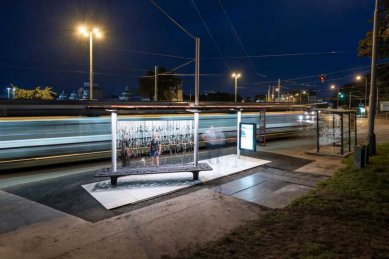
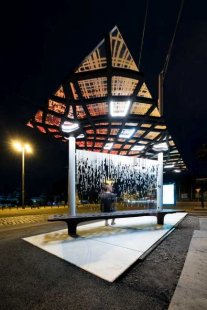
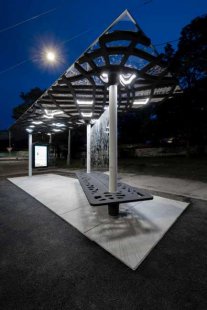
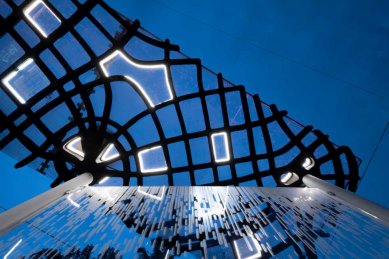
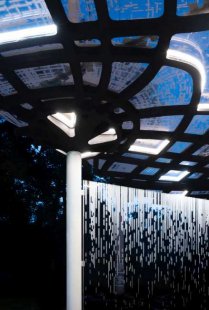
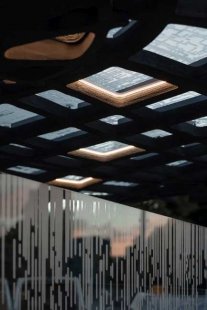
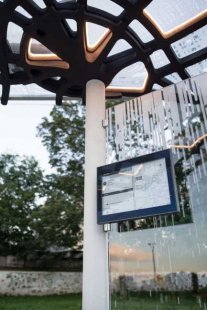
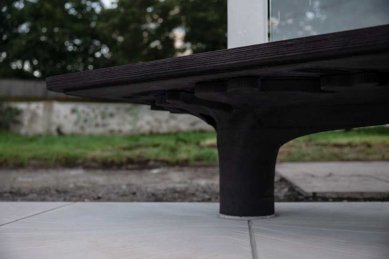
0 comments
add comment





